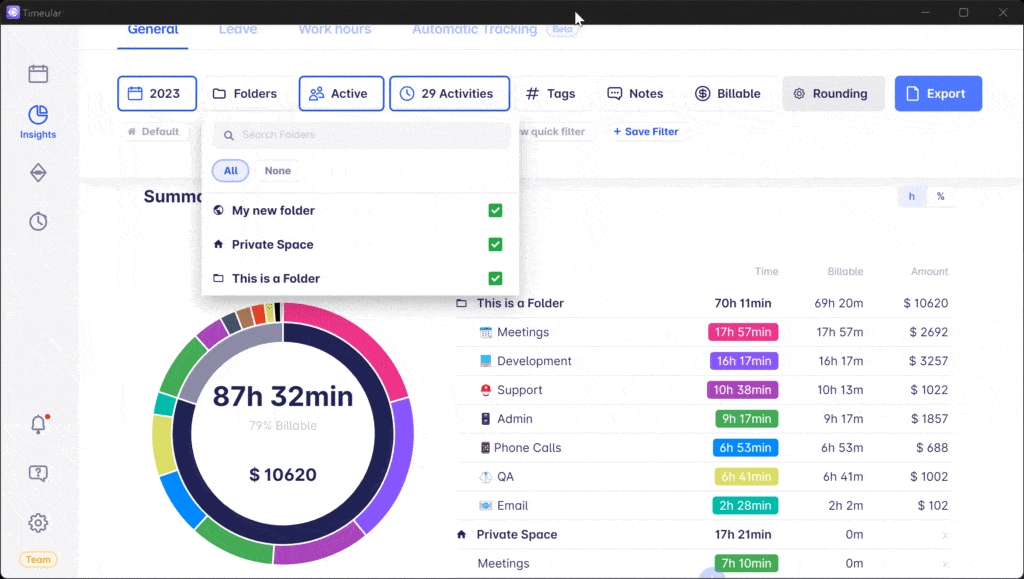Improve time and cost estimates
Time estimations. There is this constant debate if they are good or bad. Well, we believe they are a good thing because they bring more peace and stability into the workplace. However, by default we humans are bad at time estimations because of our emotions. Let’s dive deeper and see how to solve it.
Why time estimations are a good thing
Yes, work is about impact and results, but unless you can automate the whole thing, you need to put in time and energy. And in a collaborative environment, there are dependencies, deadlines, vacations, sick leaves, and many more time-related things to coordinate. Without some sort of time estimations, collaboration is just an unpredictable mess of daily check-ins, reactive firefighting, and countless coordination meetings. Which usually leads to loss of headspace and lower quality of work.
It’s like running a 4x100m with closed eyes. You can’t run full speed, the path is not straightforward, and the baton passing is a mess for both sides. All makes it impossible to win the race.
Additionally, without time estimations every idea looks like a great opportunity. But if one would take you one hour and the other 10, then they would look very different, right?
Why time estimations can’t be perfect and 100% accurate
Despite all the advantages, time estimations don’t need to be perfect and always will be wrong. Simply because emotions distort our perception of time. An exciting hour at school feels like 10 minutes while a boring one feels like an eternity. It’s the same at work. Just that work is way more complex and hence a higher degree of unpredictability.
However, we can train our perception of time with time tracking aka tracking how long things take. With those facts, we can train our estimation muscle which is also key to avoiding the planning fallacy – failing to consider how long a similar task has taken us in the past – and optimism bias – tending to believe things in the future will take us less than in the past. Both together are often the cause for exploding project and cost budgets.
So all in all, if we use and improve time estimates, everything becomes more predictable and with that, it’s easier to coordinate projects, everyone can run full speed, and free’s up headspace and time for more meaningful work. Let’s explore how!
Avoid the main two common mistakes through simplicity
A common pattern we’ve seen across over 100,000 users is to start tracking everything they do in an excel sheet with a couple columns. Both are recipes for failure.
The excel sheet is cheap and looks simple, but is a lot of manual work and is usually done at the end of the week or month. Then it’s impossible to remember even 50% of what we’ve done.
Luckily our users know they need something better and more simple. Which is why they turned to Timeular as it’s the most simple solution out there. Timeular combines the most simple methods to track into one: You either just hit one shortcut on your computer, flip our 8-sided dice, or drag & drop time entries on a calendar interface. If you don’t believe it’s simple then look at our reviews.
However, tracking everything they do is still something we hear people do quite often. There is nothing bad about wanting that, but building a habit of tracking everything is incredibly hard. By starting with e.g. tracking just one type of activity or one project you can build a basic habit of tracking. After achieving that, you can increase your degree of detail.
The most simple way to start tracking time as a team
- To start simple pick one project, service, or activity you want to improve your estimations for, e.g. estimations for project X
- Sign up for free on timeular.com
- Create one space
Project Xand invite your team members - Within that create the various activities your team does, e.g.
Managing tickets and specs,Coding,Email,Meeting,Design,Testing, … - As a team estimate how much time is going to be spent on those various activities in the next week
- Over the next week track time on those activities whenever you work on
Project X - On Monday when everyone is fresh and funky, have a look at the data together. Compare your estimates to spot what has been over-, under-estimated, or even accurate. Talk about those and see what you think you can improve. Then go back to step 5 and repeat.

How to get more advanced
After the first or second round of tracking → understanding → and improving estimations in a simple way, you and your team should have built a habit of tracking time. Now, you can start to get more advanced.
You can:
- Explore more projects
- Go into more detail on activities
- Even track tasks with notes and tags
- You can export the tracked data and do more advanced analysis
However, no matter how smart your team is, always start simple as described above.
Improving estimations is a marathon, not a sprint
Estimating time is a muscle that like any other muscle needs training and can’t reach its peak with one workout session. It takes time and experience to go from a junior estimator to a senior estimator. Additionally, as we said already, it will never be perfect. So why even bother you might ask? Estimate to minimize the risk of missing deadlines, project budgets, and the right opportunities to tackle. To make collaboration and timelines more predictable and reliable. To free up headspace and time to get meaningful work done. Isn’t that all worth it?
Good luck and if you need help or have suggestions, please get in touch at [email protected]!
You might find our other guides helpful too: